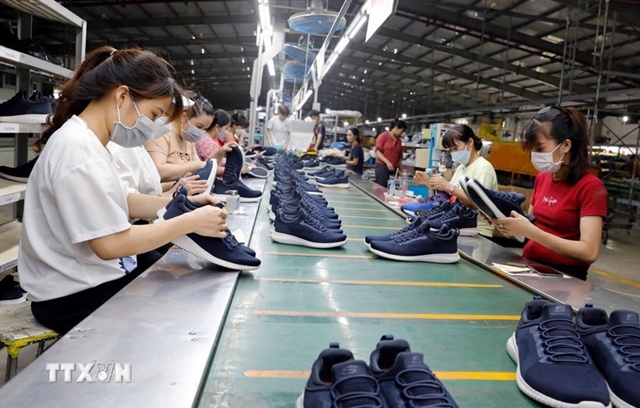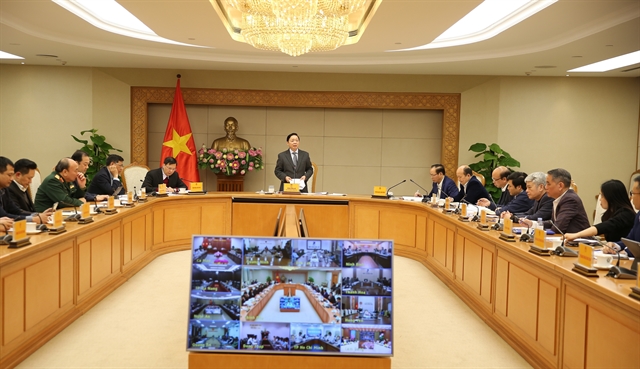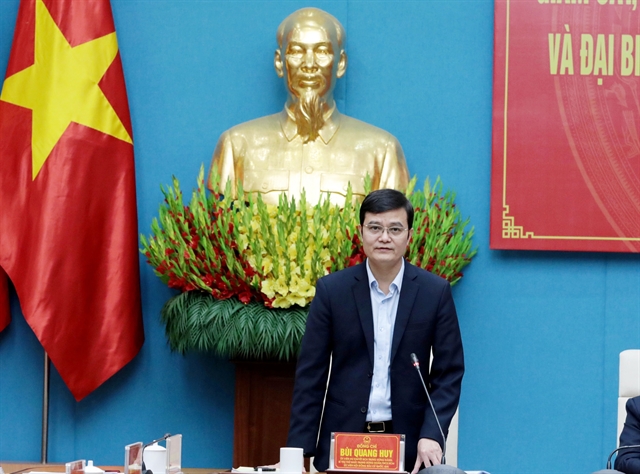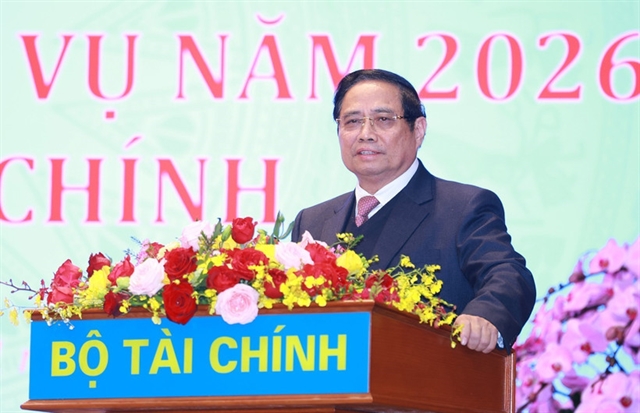 Economy
Economy

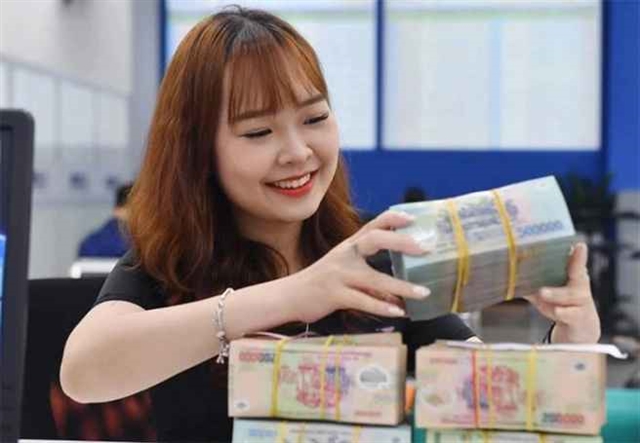 |
| If exchange rate pressure continues to increase, the SBV may consider stopping the interest rate reduction cycle to stabilise the exchange rate and avoid risks of macroeconomic instability. Photo cafef.vn |
HÀ NỘI — Việt Nam's central bank appears to be easing monetary policy further to boost economic growth, but experts warn that much depends on how the foreign exchange rate develops in the coming months. While credit growth targets have been revised upward and interest rate cuts encouraged, the currency’s stability remains a pivotal factor in shaping the trajectory of policy.
On August 5, the Government issued Resolution No. 226/NQ-CP, instructing the State Bank of Vietnam (SBV) to adjust the credit growth target for this year in line with inflation and the new gross domestic product (GDP) growth goal of 8.3 to 8.5 per cent—up from the initial target of 8 per cent set earlier this year.
The SBV was also tasked with directing credit institutions to lower costs and strive to reduce lending interest rates, aiming to support businesses and improve people’s livelihoods.
The move follows an announcement by the SBV at the end of July, granting several commercial banks greater room to expand credit.
General Director of financial data provider WiGroup Trần Ngọc Báu interpreted these steps as a clear signal that monetary policy is shifting towards further loosening to stimulate economic activity.
Regarding the Government’s directive to reduce lending rates, Báu noted a dual purpose: to curb rising deposit interest rates and simultaneously lower lending costs.
“Basically, the economy will have access to an adequate amount of affordable capital,” he said.
Báu added that, while pressures on the exchange rate may cause interest rates to rise slightly in the medium term, these fluctuations are unlikely to disrupt the market significantly.
Further easing measures came last week with the SBV’s issuance of Circular No. 23/2025/TT-NHNN, effective from 1 October 2025. Under this new regulation, banks that undertake the mandatory acquisition of weak lenders will benefit from a 50 per cent reduction in their reserve requirement ratio.
Director of Research and Development at Yuanta Securities Vietnam for individual customers Nguyễn Thế Minh described the circular as a form of monetary loosening by the SBV. Among the banks receiving preferential treatment are Vietcombank, MB, VPBank and HDBank, which have absorbed weaker institutions such as CB, OceanBank, DongA Bank, and GPBank.
Specifically, these banks will see their reserve requirement ratio cut from 3 per cent to 1.5 per cent on deposits under 12 months, and from 1 per cent to 0.5 per cent on deposits of 12 months or more. This change is expected to release a significant amount of capital, enabling the banks to increase lending capacity.
Despite these measures, experts emphasise that the extent of further monetary easing depends heavily on developments in the exchange rate.
Báu pointed out that the room for exchange rate adjustment this year is very limited. By mid-August 2025, the US dollar had strengthened by 3.5 per cent against the đồng since the start of the year.
With the SBV’s target for annual exchange rate fluctuations at around 4.5 per cent, only about 1 per cent adjustment room remains for the rest of the year—a period when exchange rate pressures typically increase.
Given that exchange rate stability is crucial for macroeconomic balance, any significant tension at year-end could force the SBV to reverse its interest rate cuts, reducing capital flows into the market.
“If exchange rate pressure intensifies, it may affect monetary policy decisions and market liquidity,” Báu said.
Meanwhile, some experts suggest that even if the US Federal Reserve cuts interest rates next month, it may not ease the domestic exchange rate pressures. Although the US dollar has depreciated globally since early 2025, the Vietnamese đồng has continued to weaken against the dollar.
At a recent Government meeting, SBV Governor Nguyễn Thị Hồng acknowledged the considerable challenges facing monetary policy. With inflation risks mounting and foreign exchange pressure increasing, the Governor stated that if the pressure on the exchange rate persists, the SBV may halt the current cycle of interest rate reductions to stabilise the currency and mitigate the risk of macroeconomic instability.
Vietnam’s monetary policy thus finds itself at a delicate crossroads. With ambitions to support robust GDP growth, the central bank must balance easing financial conditions against the risks posed by exchange rate volatility.
As the year progresses, the ability to maintain this balance will be key to sustaining the nation’s economic momentum.— BIZHUB/VNS


